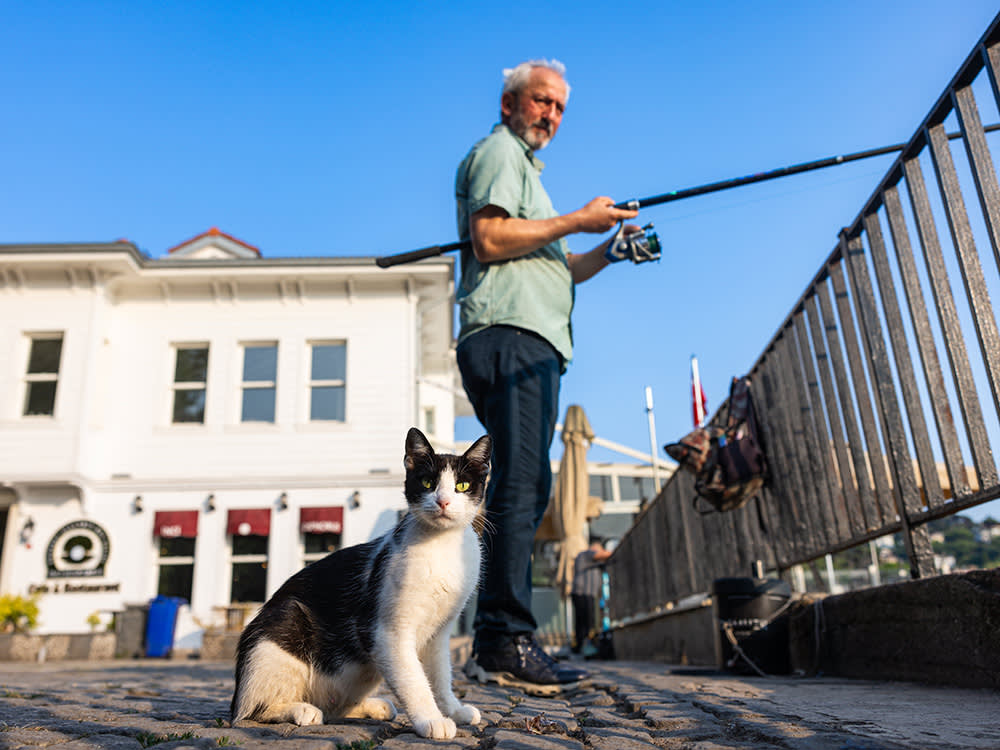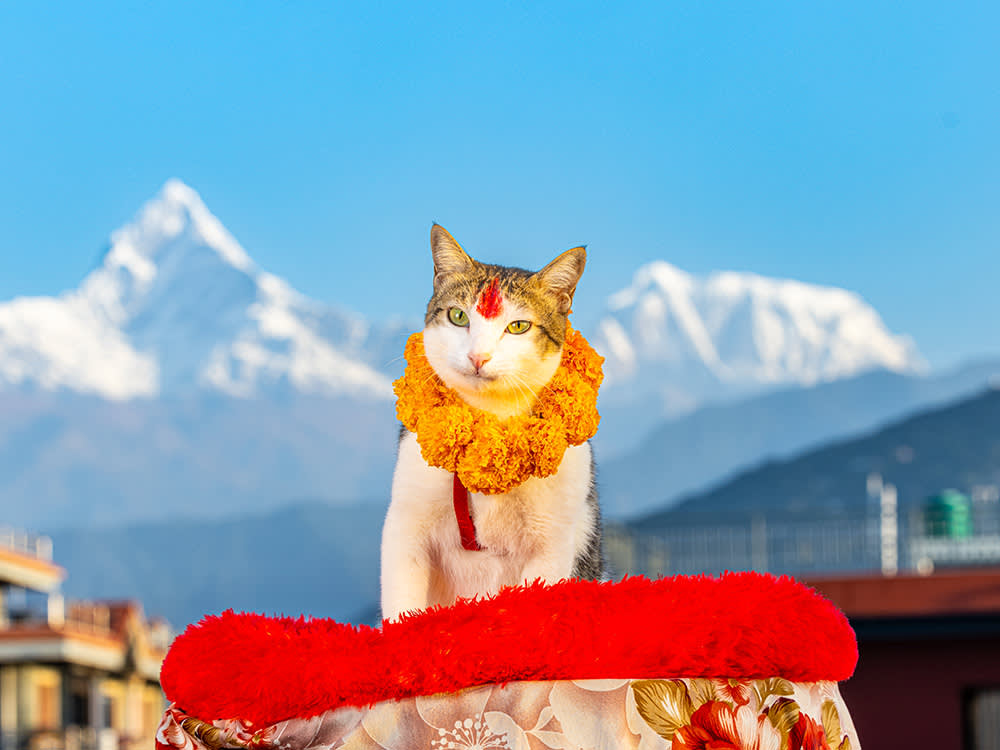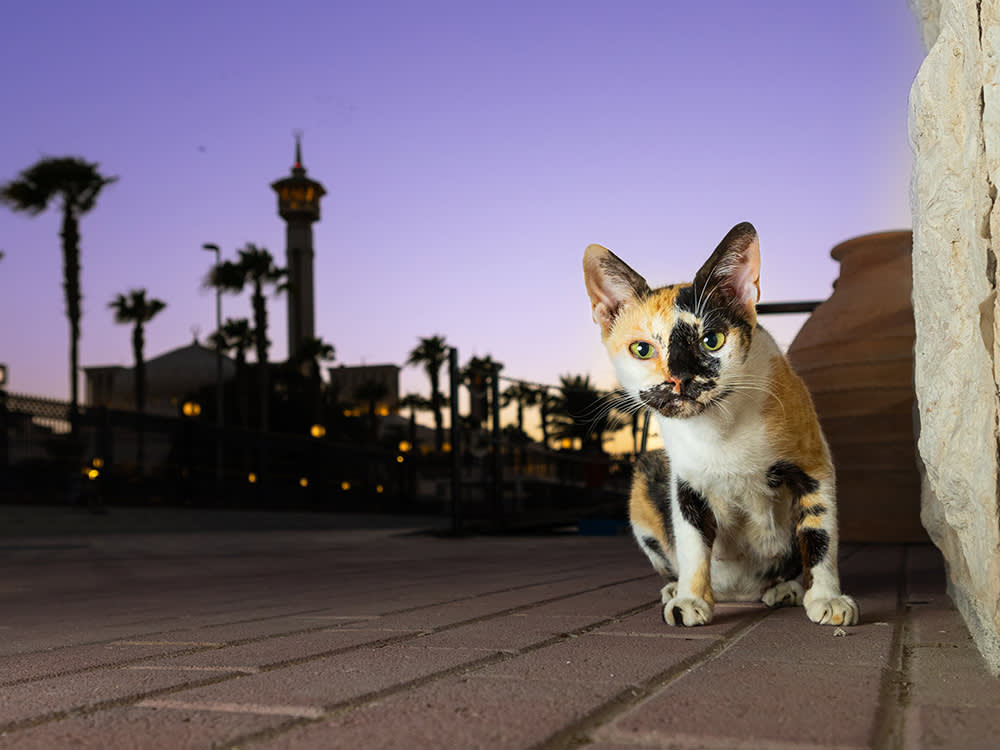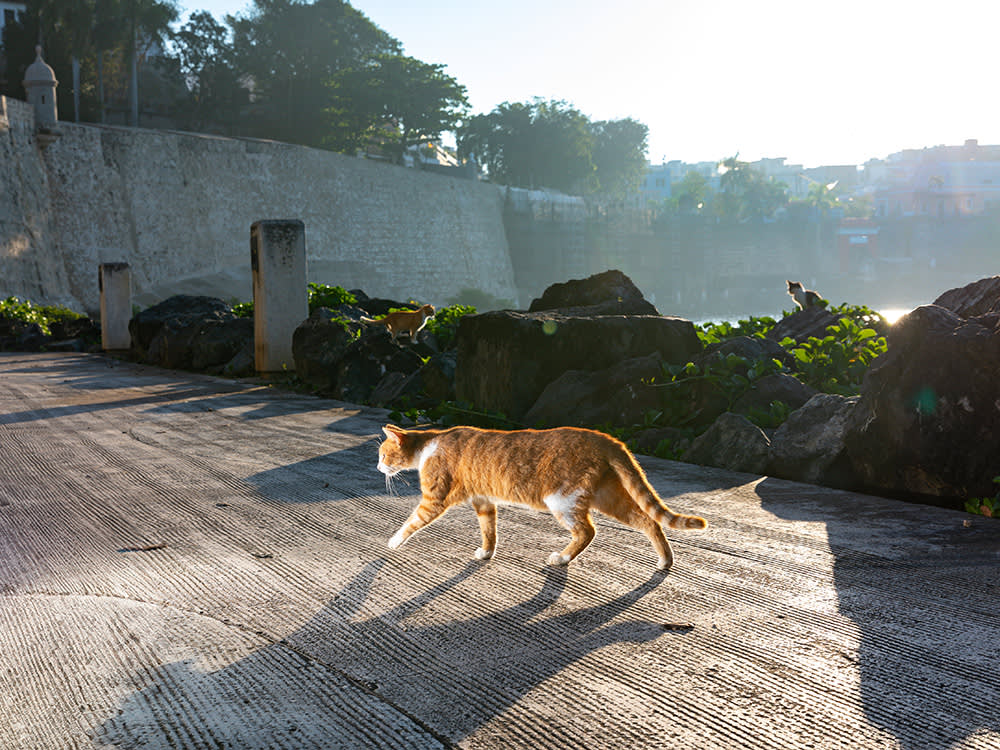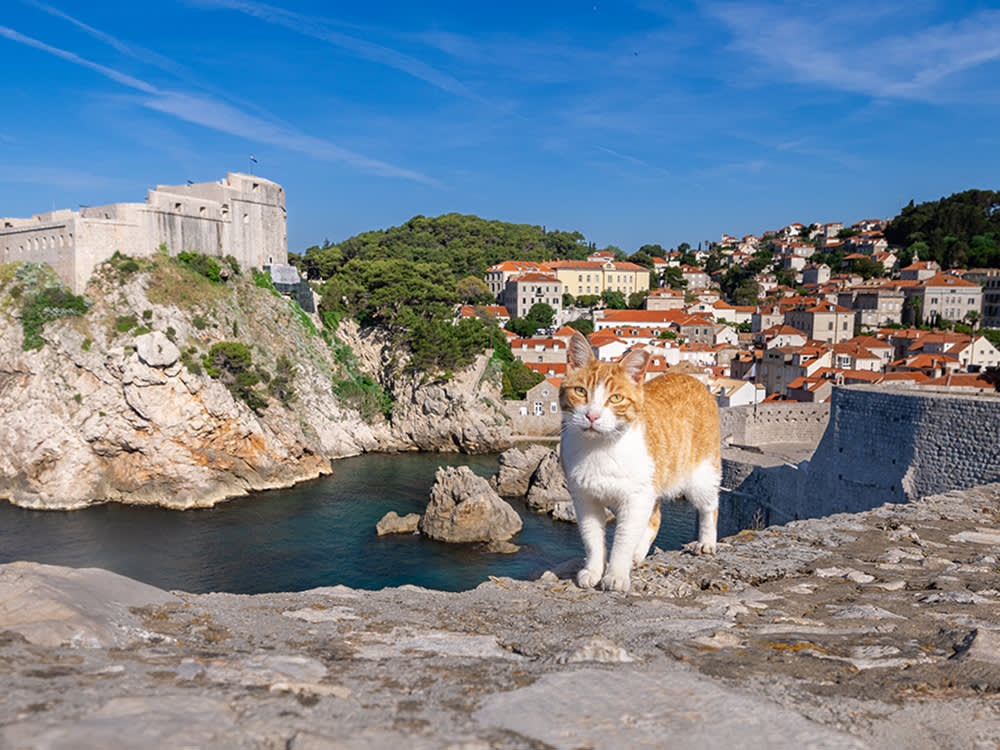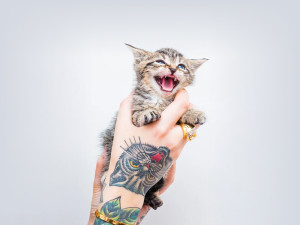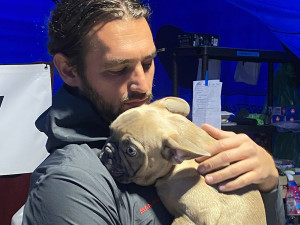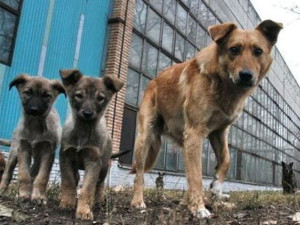Cats of the World Is Full of Pics Every Cat Lover Must See
Take a sneak peek at Hannah Shaw and Andrew Marttila’s gorgeous new photography book.

Share Article
Thanks to Hannah the “Kitten Lady” Shaw and her husband, photographer Andrew Marttila, cats across 30 countries are now addicted to the well-loved cat treat Charuopens in new tab. When Marttila was taking photographs for the couple’s new bookopens in new tab, Cats of the World, the little “meat tubes,” as he calls them, were the secret to his success. Once offered a taste of the good stuff, these kitties became willing models, if they weren’t before.
And come October 15, when the book is available for sale (there’s still time to get your pre-order in!), cat parents and admirers everywhere will get to see the final product of those Churu-fueled photoshoots.
The book has been in the couple’s viewfinder, if you will, for five years. When they were in Malaysia in 2019 and posted some photos of cats on social media, both Shaw and Marttila were disheartened by some of the xenophobic comments from people who made a lot of assumptions about cats in that country. Although they recognized that this negativity was only coming from a very small portion of their followers, they wanted to create something that would communicate what they really were seeing when they went abroad.
“Here we were experiencing incredible passion, meeting rescuers doing very impactful work, and we just thought, Gosh if people could just be here with us and see what we’re seeing and know what we’re knowing and understand the compassion that exists that is so universal and so easily recognizable,” Shaw says.

She adds that “one of the side quests” of the book is for readers to see that compassion for animals is universal. “Our decision [was] to focus on really positive stories, really uplifting stories and to center the people in these communities and see that compassion takes many forms and just see the best in one another,” she says.
A worldwide community of cat lovers
The pandemic put traveling for the book on hold for a while, but in the meantime, Marttila and Shaw cast a wide net to plan where they should go once they were able. They put out asks on social media in what Shaw refers to as a “game of tag,” asking friends and friends of friends if they knew anyone who lived in a particular country, then followed the breadcrumbs from there. She adds that there are plenty of people they were connected to who don’t have social media, so it was crucial that they relied on local knowledge of anyone who would be good for them to interview.
Through this networking, they were connected to people they never would have met on a regular tourist trip. The people they talked to — sometimes in remote villages and neighborhoods — opened their homes to them, gave them rides, and most importantly, taught them about the power of communities raising cats.
“I have a little bit of sadness for how we’ll travel in the future, because I don't want to be on a tour bus; I want to be on the back of a motorbike,” Shaw says. “I don’t want to be in the famous place; I want to be getting a home-cooked meal in someone’s house and knowing what it’s really like to be there.”
Marttila adds that an added bonus of this trip around the world was the chance to debunk Western biases, especially when it comes to caring for animals.
“We found a lot of inventive, resourceful, creative people who didn’t have much money. They shared what they have,” he says. “In the U.S. and more industrialized countries, there’s a focus on high-value medical equipment as opposed to utilizing what resources are there in the environment and capitalizing on what they have.”
For example, he says, in Nepal, they don’t have kitten formula, so they have to come up with something else. One rescuer they met found that mixing a certain amount of water with yak milk yields a nutritious mixture.
Shaw adds that many people assume that in countries that are socioeconomically wealthy, pets are taken care of better than in places with fewer resources. “I found that if I could make one direct line between things being better for animals, it would be more community-focused cultures,” she says. “If I was having to be reborn as a cat, I wouldn’t want to bet on America, honestly, because we really disadvantage certain animals. And I think in an area like Zanzibar or like Mumbai, or so many other places that we cover in the book, you’re allowed to be a cat in the community. And caregiving can look a lot of different ways.”
She goes on to tell a story about meeting cats in Mumbai who lived in three different families’ homes. Each family had a different name for any given cat, and the cats felt free to roam between houses.
“We’re so individual that we don’t think it’s our responsibility to help community animals, but in a culture like India, where everybody is looking out for their community, it’s very natural that that would include the animals in their community,” Shaw says.
She and Marttila add, however, that there was a “variance” in the condition of the cats they saw. Shaw says that a lot of places that people assume are “cat heaven” weren’t equipped with the resources to care for them. In Istanbul, for example, they “witnessed more kindness to cats on the street” than maybe anywhere else. But the flip-side, Shaw says, is that the economy in Turkey doesn’t allow for people to afford necessary vet care for the animals there. So, their aim was not to just tell the “rose-colored glasses story” but to also write about “the very real challenges that communities face” while featuring the people who are trying to find solutions.
Finding local color
As they ventured through countries, Marttila and Shaw realized they didn’t really need to fluently speak the native languages of where they were. Instead, they learned how to say one phrase: “Is there a cat here?” That sentence unlocked access to what Marttila refers to as a “secret universe” full of people making heroic rescue efforts. They only needed that phrase, or sometimes to point to the cat tattoos they both sport on their arms, to be transported into the worlds of people who care for cats just as much as they do.
The couple tells a story of an elderly woman, Mrs. Kaparou, whom they refer to in the book as “the local godmother of cats.” Mrs. Kaparou, who lives on a hilltop overlooking the village of Paros, welcomes local street cats to her garden, where she feeds and cares for them. She also pays for their spay/neuter surgeries and all their vet care. She doesn’t speak a word of English, but it didn’t matter at all for her visit with Marttila and Shaw. They communicated with the universal language of three people who love cats (with some help from Google Translate).
Shaw describes the warm welcome they got from Mrs. Kaparou, who invited them into her traditional Greek kitchen, complete with terrazzo tile, and fed them tomatoes from her garden. They met all the cats who populated her home, sipped coffee, and admired the view of the blue-and-white houses in the village.
At one point, Mrs. Kaparou said, “Thank you for loving animals. You are so beautiful, both of you and I love you so much.” Instantly, Shaw, who welcomed the grandmotherly energy, was brought to tears. “To be in a Greek woman’s kitchen and feel like you’re with your grandma,” she recalls, getting misty-eyed again over the memory.
Getting the perfect shot
While the ethos behind Cats of the World is clear the moment you crack it open, one question comes to mind: How can anyone get a photo of a cat that’s that good? Many of these cats aren’t house cats, despite being incredibly used to people and friendly. Well, remember the Churu trick? There were, of course, many treats involved in the making of this book, but Marttila, who’s known as a master of sorts when it comes to cat photography, relied on his self-devised tips and tricksopens in new tab to get the perfect shot.
When he and Shaw came upon a cat out in the community or on a rural hike, he would aim for one thing: just to get a clear shot of the cat. “If I could frame it well, awesome, and then i would become more ambitious as I discovered whether or not they are social. If they were social, we used treats and toys to sort of ply them a little bit, move them around, if they were in a group or something like that.”
Then, as the cat or cats became more comfortable, he’d add in other gear, like the flash. He adds that once you get treats involved, the cats “would be like, ‘What do you want, do you want me here, where do you want me to pose?’”
And, to give due credit to the subjects themselves, many were eager to be photographed. Shaw remembers one cat in particular, whom they met in Montenegro and who sounds like she’d watched several seasons of America’s Next Top Model: “If we’d stayed there, she would have gone six hours.”
Check out book tour dates hereopens in new tab to see if you can attend for a chance at a signed copy.

Hilary Weaver
Hilary Weaver is the senior editor at Kinship. She has previously been an editor at The Spruce Pets, ELLE, and New York Magazine. She was a staff writer at Vanity Fair from 2016 to 2019, and her work has been featured in Esquire, Refinery 29, BuzzFeed, Parade, and more. She lives in New York City and New England with her family, which includes two herding pups, Georgie and Charlie.
Related articles
![A hand holding a kitten with a cat tattooed at the hand.]()
Heads Up: It’s Officially “Kitten Season”
Hannah Shaw, aka Kitten Lady, on how you can care for orphaned kittens this spring.
![Woman holding two young kittens.]()
Why Kitten Season Is Getting Longer and More Intense Every Year
And what you can do to help.
![A cat with blue eyes standing before a door entrance.]()
How TNR Is Helping Outdoor Cats
Trap-Neuter-Return is the most humane way to keep stray cat populations in check. Here’s how it works.
![Andrew Kushnir, Nomad Vet, with pug]()
Meet Andrew Kushnir, “the Nomad Vet” Helping Refugee Pets in Ukraine
The veterinarian on helping out, making a difference, and the finer things in life (mostly dogs and music).
![Relaxed girl holding a black kitten near her face.]()
What to Expect When Fostering a Kitten
Besides plenty of cuteness, of course.
![dr lachlan campbell australian vet in ukraine]()
Australian Vet Dr. Lachlan Campbell on Saving Animals in Ukraine
Bombs, mines, and military checkpoints won’t stop him from evacuating animals from Irpin and running a pop-up vet clinic in Lviv for refugees and their pets.


